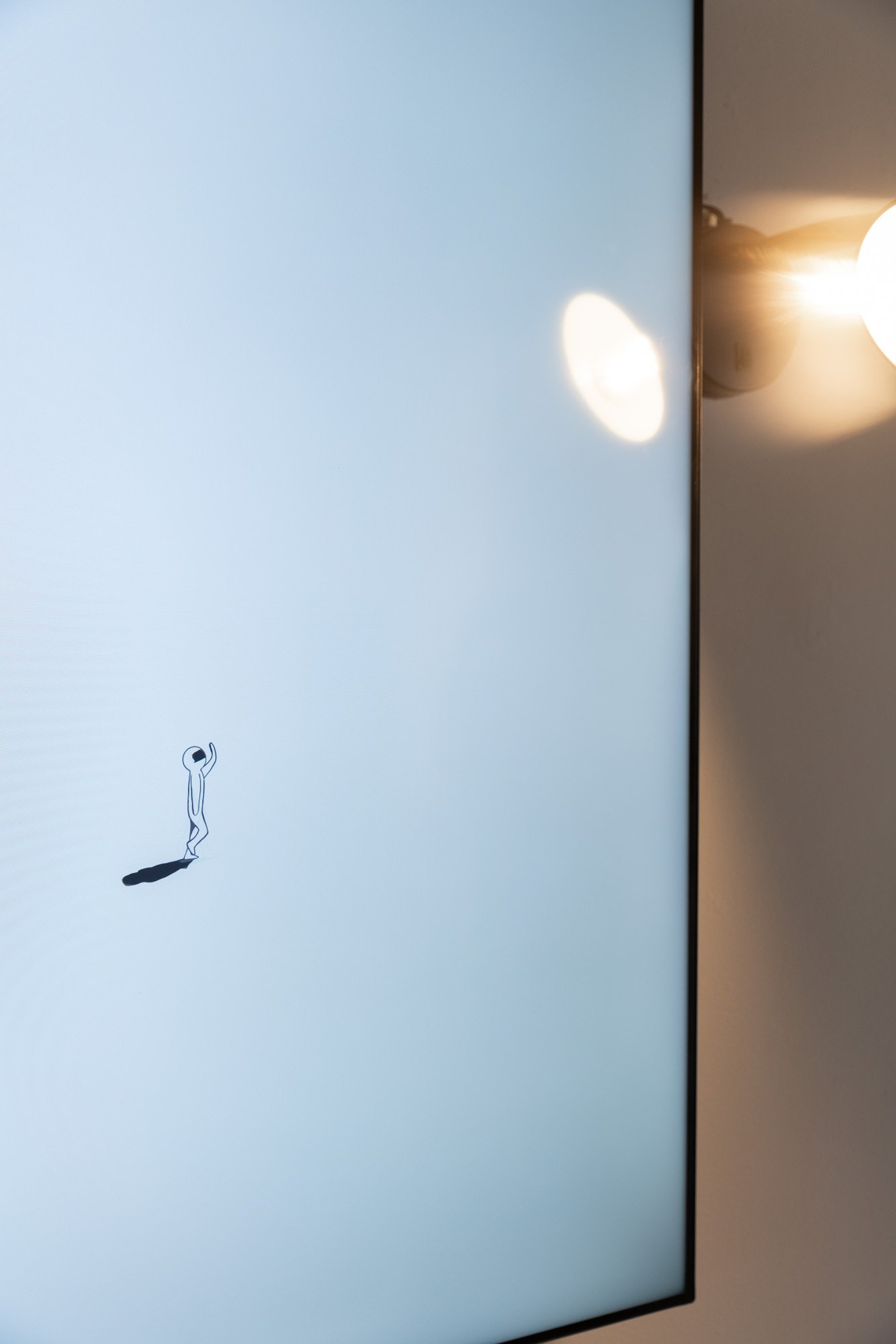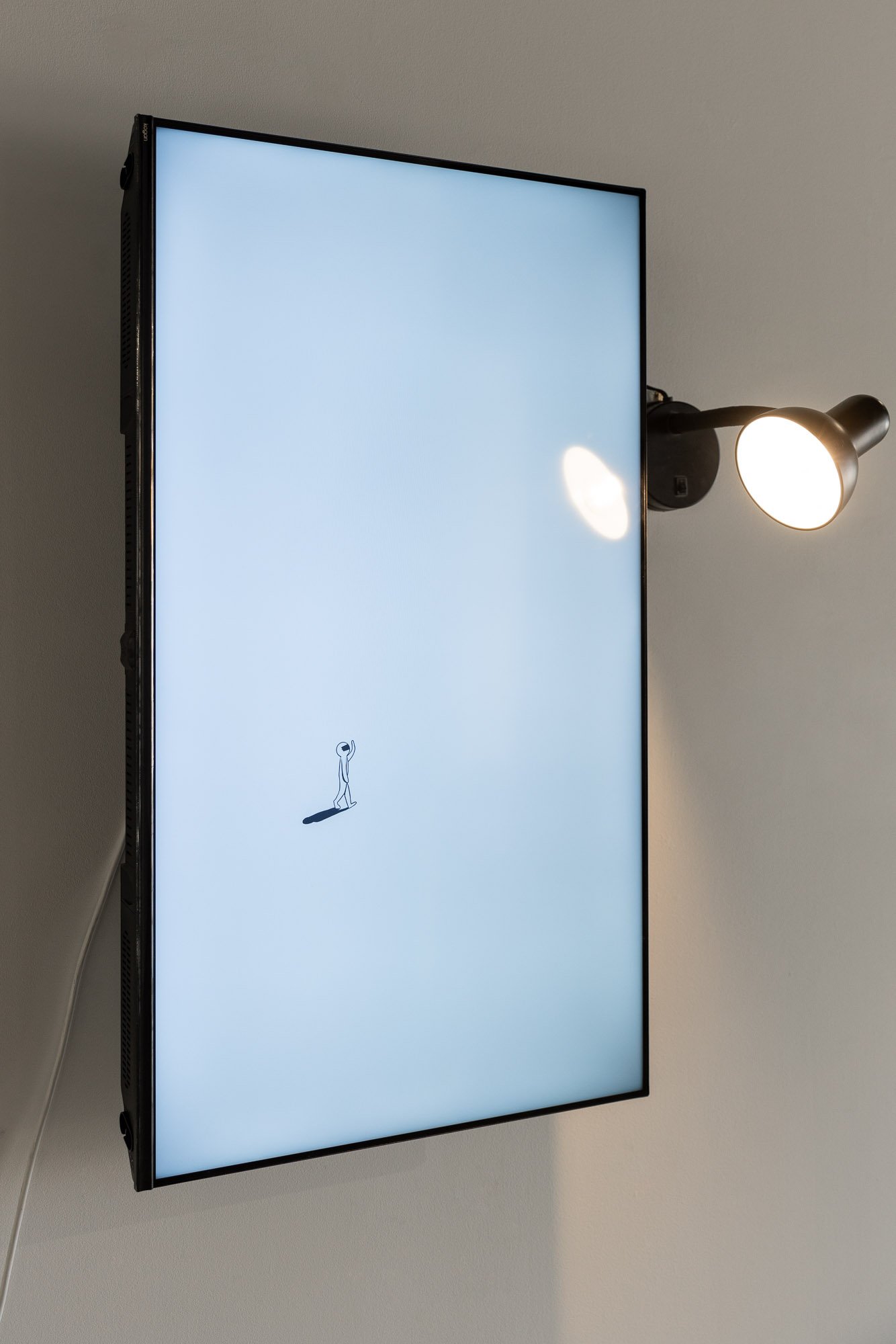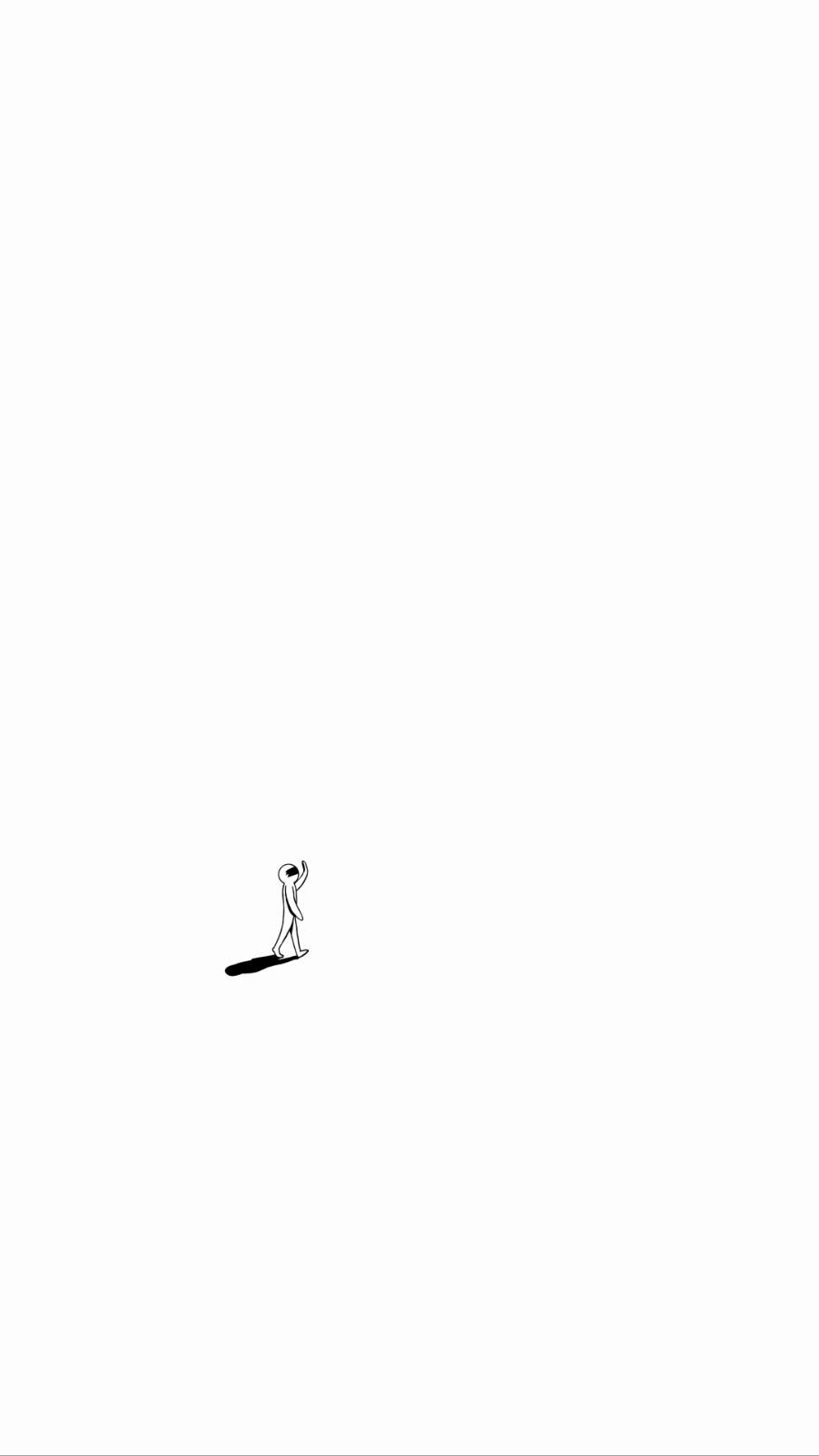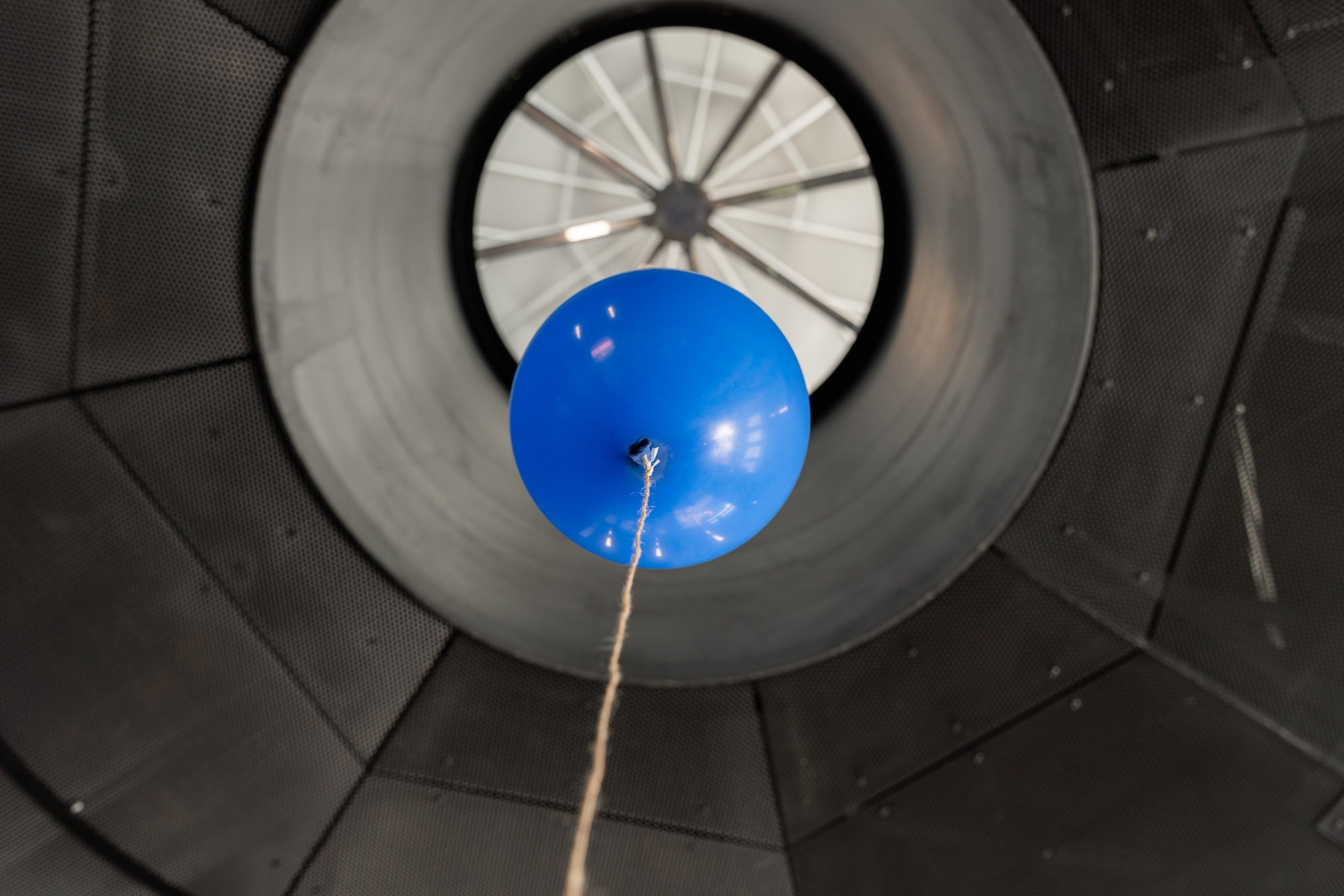Big Little Humans, 2023
Fall, 2023
Alex Lark
Animation loop, tv monitor
120cm x 80cm x 10cm



Glare, 2023
Alex Lark
Animation loop, desk lamp with incandescent bulb, tv monitor
120cm x 80cm x 30cm
Hold On, 2023
Alex Lark
Animation loop, iPad, string, balloon, helium
220cm x 25cm x 18cm
Excerpt from my essay “Collecting Apricots, if apricots were like rocks and ideas” (2023)
Alex Lark, Nov 15th 2023
THE SCALE OF THE VOID
The invisible ether of nothingness is difficult to place. Both a scientific quandary and proven philosophical fodder for the ages, it is a delightful and poetic mystery. In his book, The Void, the physicist and science educator Frank Close explores the confounding concept of nothingness through a scientific and philosophical lens. In succinct chapters, he expounds on the microscopic and unseeable nature of atomic particles to the vastness of the cosmos and expanding universe.(6) In talking about the composition of an atom and the space between protons and electrons, he reveals the idea that “an atom is apparently a perfect void: 99.9999999999999 per cent empty space.”(7)
Smithson often drew from the sciences in his artistic language and comprehension. When defending the idea of empty volumes he states “One might object to the “hollow” volumes in favour of “solid materials,” but no materials are solid. They all contain caverns and fissures.”(8) His philosophical and artistic approach to language pulls us into the scale of contradiction. One particularly eloquent example of this theory is when Smithson says “size determines an object, but scale determines art. A crack in the wall if viewed in terms of scale, not size, could be called the Grand Canyon. A room could be made to take on the immensity of the solar system.”(9)
“A crack in the wall if viewed in terms of scale, not size, could be called the Grand Canyon. A room could be made to take on the immensity of the solar system”
This conscious manipulation of scale and space was central to my most recent animation artwork in which I created three endless video loop cycles of a human-like figure existing in the void. In the piece titled Falling (2023), I showed the figure falling through a blackness, with hints of the movement of space through what appeared to be specks of dust or dots from distant stars trailing in the distance. Through the gentle movement of the limbs of the figure loosely waving in the vacuum, it isn’t quite concrete to an audience how fast the figure falls, caught between the notion of high velocity or slow suspension. Without expression, there is a letting go, a surrender and pathos of the act.
In Hold On (2023) I placed a small iPad on the floor in the centre of an expansive room. A balloon tied to a string that disappeared under the edge of the screen acted as a soft, nostalgic signpost inviting the audience to be pulled into the depth of the two-dimensional space and reveal the illusion of the three-dimensional world contained within the apparent fissure in the floor. As the audience approached closer, they noticed the movement of the universe beneath a small figure dangling in a cube-like void. Eventually, crouching over the floor, it was possible to see shooting stars and cosmic energy passing in the perfect geometric window, like Kazimir Malevich’s Black Square (1913), into the spatial abyss. In Anish Kapoor's Descent into Limbo (1992), the artist built a 600x600x600cm negative cylindrical hollow in the floor of a concrete room and coated the interior in such a saturated blackness it created the phenomenological effect of a bottomless void. (10) Viewers’ curiosity about the rich emptiness was pulled to the work with a gravitational human interest.
-
6 - Frank Close, The Void (Oxford: OUP, 2007).
7 - Ibid, 28.
8 - Robert Smithson and Jack D. Flam, Robert Smithson, the Collected Writings (University of California Press, 1996), 107.
9 - Ibid, 147.
10 - Anish Kapoor, "Descent into Limbo," 2016, anishkapoor.com/75/descent-into-limbo.
-
Close, Frank. The Void. OUP Oxford, 2007.
Kapoor, Anish. “Anish Kapoor : Descent into Limbo.” Anish Kapoor, 2016, anishkapoor.com/75/ descent-into-limbo. Accessed 20 Oct. 2023.
Smithson, Robert, and Jack D. Flam. Robert Smithson, the Collected Writings. University Of California Press, 1996.





